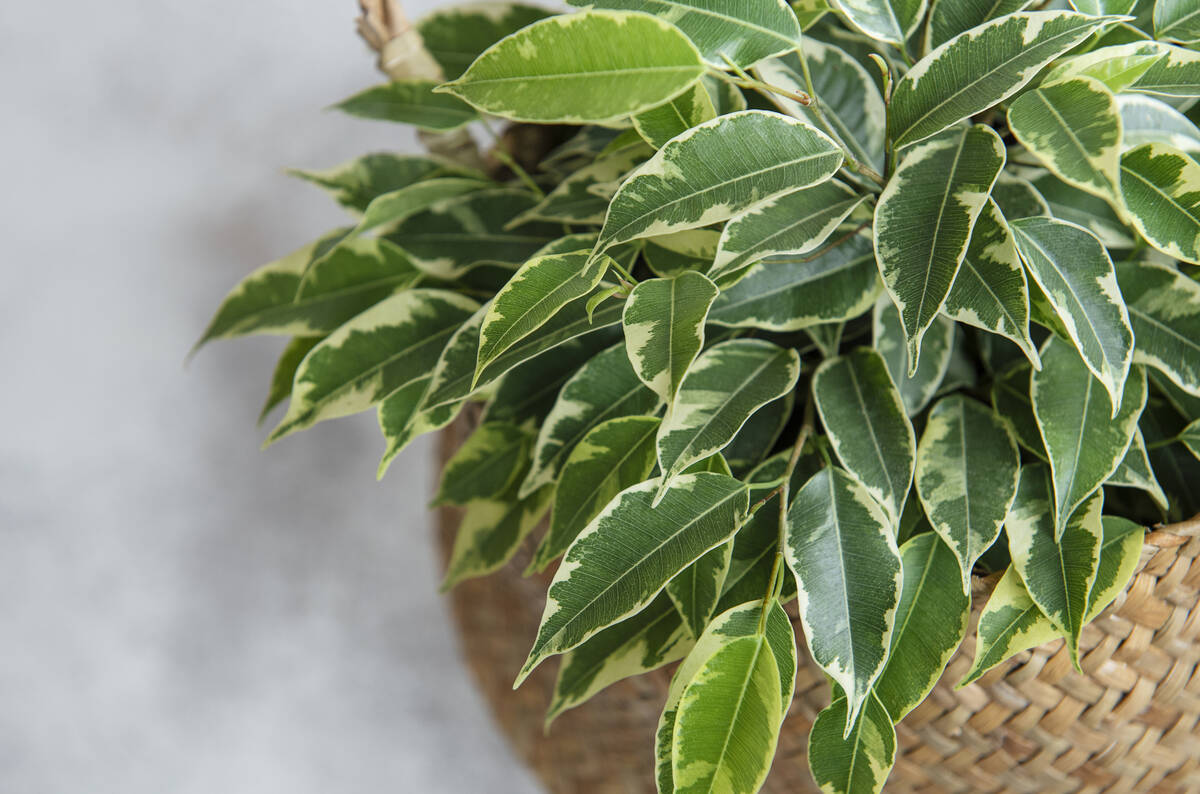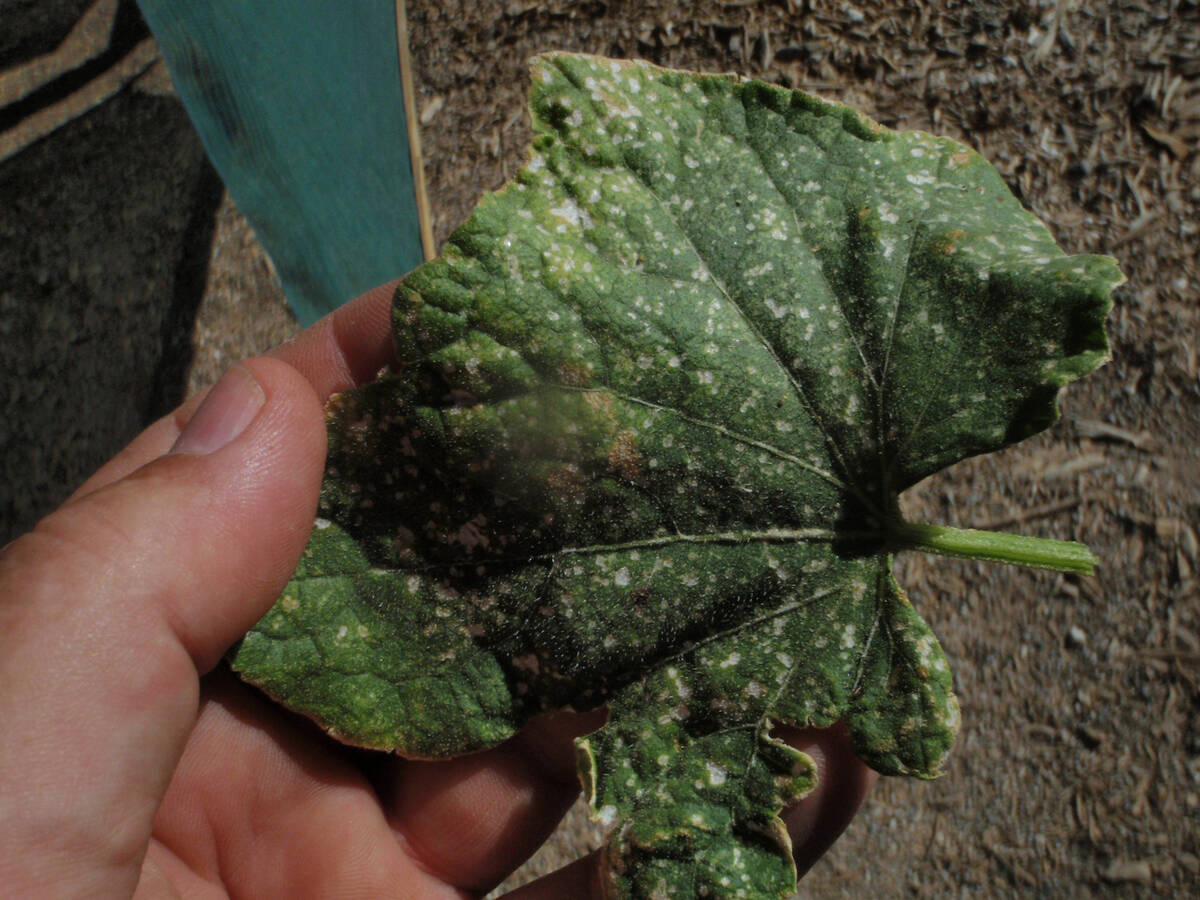The amount of sunlight, water crucial to growing houseplants
Q: Can you help me with some houseplants? I am open to redoing the house with more houseplants throughout. But I do have two nosy dogs, so we needed to place rocks on top of the soil.
A: The rocks are not important. The soil of the houseplant should be filled to about 1 inch below its lip or the uppermost edge. Any houseplant’s leaves can be cleaned monthly or more often. This could be done with a commercial product called Leaf Shine, made by Miracle-Gro, or with a similar product made by using coconut oil or olive oil.
Placement of interior plants is important. The amount of sunlight and watering are most important. The sunlight should never shine directly on its leaves. Bright light is not the same as direct light. Bright light bounces off light-colored walls and makes the room bright.
When you water containers, do so until the water comes out the bottom of the container. It is not so much the amount of water you give a plant but when it is watered again that’s important. In the case of weeping fig, let the top 2 inches dry out before it’s watered again. A water meter (experienced gardeners will lift or nudge the container to judge its weight) might help you know when to water again. It is important not to water these plants too often (or else root rot can occur) and to repot them when the soil is worn out (low on organics) and the water is not draining properly.
As an example, Benjamin or weeping fig is native to tropical regions. In the wild, it can grow to 50 feet. Never put weeping fig in an area prone to drafts, as it may shed its leaves. It is normal for your weeping fig to lose leaves if it gets cold or moved to a new spot. Weeping fig prefers lots of bright, indirect light.
This plant prefers high humidity, so you may want to keep a humidifier nearby.
Repot all houseplants growing in semi-large to large containers every four to five years.
Q: My vineyard leaves had brown spots and very small, blacks spots made by insects. These insects seem to be sucking the sap from the vineyard leaves. What should I do? I sprayed the grape leaves with Bt (Bacillus thuringiensis). I sprayed this because I discovered skeletonizer larvae and eggs. It didn’t work on these insects.
A: This is leafhopper damage. Spray with Spinosad on the leaf bottoms, not Bt.
With grape leafhopper damage, the tops of the leaves should show some small, yellow spots scattered throughout the leaf. These small yellow spots are called stipules. These yellow stipules (on the top of the leaf) are caused by the grape leafhopper feeding on the bottom of grape leaves.
Focus on spraying the underside of the leaves where the leafhoppers are, not the tops where the stipules can be seen. Spinosad should also get the much larger grape leaf skeletonizer, too.
If not controlled when they first appear in April, by July and August these leafhoppers can be so numerous that walking near the vines causes hundreds of them to jump all over the place. I have had them accidentally hop into my face, nose and mouth.
By the time May arrives, the adult leafhoppers have developed. These adult leafhoppers are much harder to control than when they started out as nymphs. Applications of Spinosad in April will also control the first generation of grape leaf skeletonizer.
As an alternative, soap sprays are also effective if the undersides of the leaves are sprayed. Soap sprays should be done about every three or four days. Watch for control and repeat applications until you drive the numbers down.
Q: I had extremely bad luck trying to produce lemons on my 15-gallon container dwarf lemon tree last spring. It gets automatic watering. I used the recommended citrus fertilizer at rates suggested. My container is on a roll-around base, and the plant was moved out of the wind on bad days. I also covered it over and heated the plant with a light bulb during winter cold spells. I had at least 500 blooms and thousands of bees. (I had three mature trees that were in bloom.) I sprayed lemon flowers and buds with commercial fruit-set product periodically and blooms formed. Tiny green lemons started to all drop, leaving me with no lemons. What gives?
A: You didn’t tell me what kind of dwarf lemon you have? Not that it makes much difference. The usual time of year for flowering is January and early February after a warm spell. All fruit trees, including the more temperature-tolerant dwarf Meyer lemon (the tree is cold tolerant, not the flowers), are susceptible to winter cold when the flowers are open. I would suggest it might be the low temperatures. All it takes is one freezing night during the winter when temperatures drop below freezing to have a catastrophe.
Bob Morris is a horticulture expert and professor emeritus of UNLV. Visit his blog at xtremehorticulture.blogspot.com. Send questions to Extremehort@aol.com.























